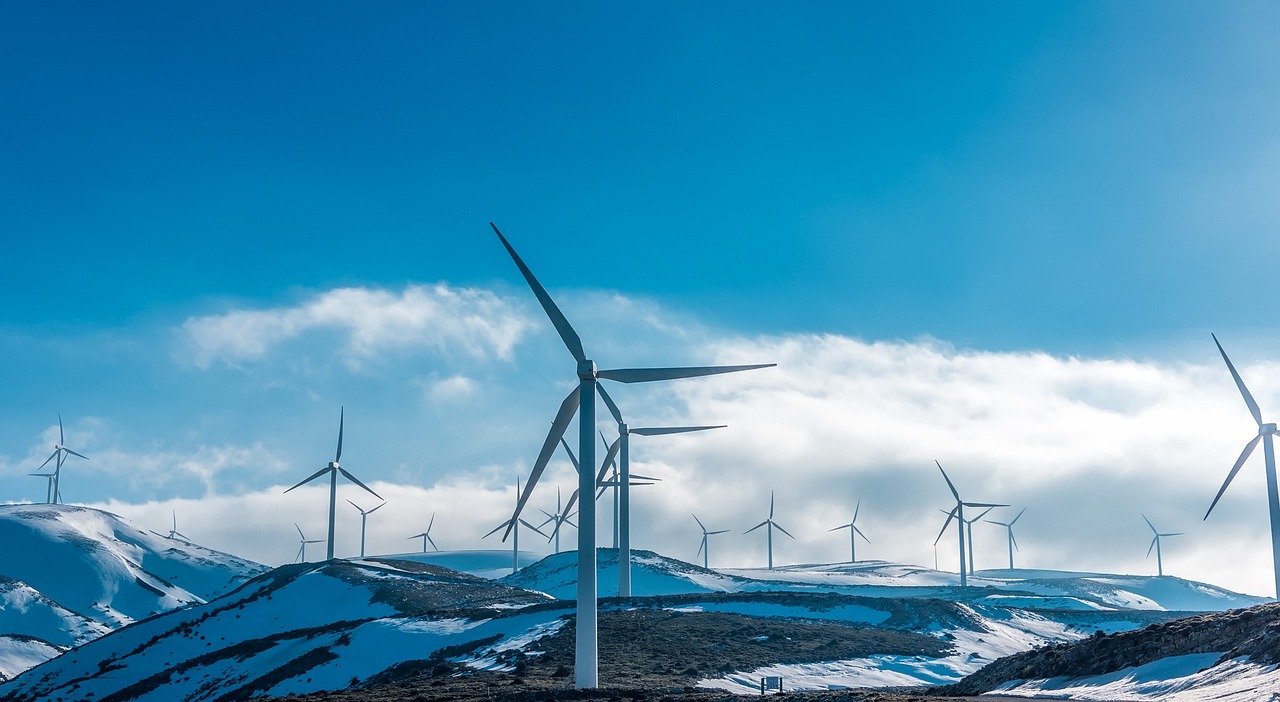Wind Energy in Sustainable Development
In this article, we will delve into the crucial role of wind energy in sustainable development, exploring its benefits, environmental impacts, and potential for driving economic growth.
In recent years, the urgent need for sustainable development has become increasingly apparent as the negative impacts of fossil fuels on our environment and society have become more evident.
As a result, the global shift towards renewable energy sources, such as wind and solar power, has gained significant momentum.
Join us as we navigate the winds of change and discover how wind power can shape a sustainable future.
Wind Energy: A Renewable Powerhouse
With the depletion of finite fossil fuel reserves and growing concerns over greenhouse gas emissions, the world has turned its attention to renewable energy technologies.
Wind power, one of the most prominent renewable sources, has emerged as a frontrunner in the quest for clean energy.
Unlike fossil fuels, wind energy is harnessed by converting the kinetic energy of wind into electricity using modern wind turbines.
Environmental Impacts and Benefits
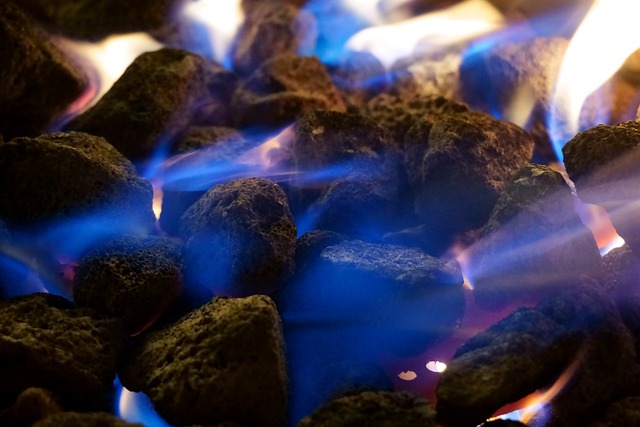
One of the main reasons behind the surge in wind energy projects worldwide is its minimal environmental footprint compared to traditional energy sources.
Wind power generates electricity without emitting greenhouse gases or contributing to air pollution.
By reducing reliance on fossil fuels, wind energy mitigates climate change, preserving the delicate balance of our planet’s ecosystems.
Additionally, wind farms have a relatively small land footprint. And can be integrated into open fields or coastal areas without disrupting natural habitats.
Economic Growth and Energy Security
Wind energy holds immense potential for driving sustainable economic development.
As governments and private companies invest in renewable energy projects, wind farms contribute to job creation, bolstering local economies.
The wind industry fosters innovation and provides opportunities for manufacturers, technicians, and researchers alike.
Moreover, wind power enhances energy security by diversifying the energy mix and reducing dependence on foreign sources of fossil fuels.
Community Engagement and Empowerment
Wind energy projects often involve close collaboration with local communities and authorities.
This engagement ensures that the development of renewable energy aligns with the needs and aspirations of the people it serves.
By establishing partnerships, wind power projects can provide economic benefits to local communities. Through revenue sharing and contribute to the sustainable growth of urban and rural areas.
Harnessing the Power of Offshore Wind
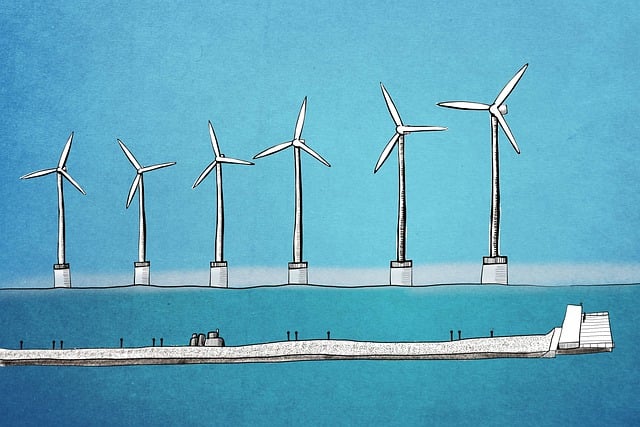
In recent years, offshore wind farms have gained prominence as a viable option for sustainable electricity generation.
By harnessing the strong and consistent winds present in coastal regions, offshore wind farms can significantly contribute to the renewable energy sector.
Moreover, locating wind turbines at sea minimizes visual and noise disturbances for nearby communities. Making offshore wind a promising avenue for future development.
Stay tuned for the next section where we will explore the environmental science behind wind energy. Its integration into national energy policies, and the global efforts to combat climate change through the use of renewable energy sources.
Environmental Science: Understanding Wind Energy Workings
To comprehend the environmental science behind wind energy, it is important to grasp how wind turbines function.
Modern wind turbines consist of three main components: the tower, the nacelle, and the turbine blades. When wind flows over the turbine blades, it causes them to rotate.
The rotational motion is then transferred to a generator in the nacelle, which converts the mechanical energy into electrical energy.
This clean and renewable energy production process ensures that wind power does not release harmful emissions. Or pollutants into the atmosphere, making it a sustainable energy solution.
Integration into National Energy Policies
Governments worldwide are recognizing the potential of wind energy in achieving sustainable energy targets and reducing carbon dioxide emissions.
Through comprehensive energy policies, many countries have set ambitious renewable energy goals, with wind power playing a significant role.
These policies often involve financial incentives, regulatory frameworks, and long-term planning to promote the development of wind energy projects. And foster the growth of the renewable energy sector.
Global Efforts: Combating Climate Change with Wind Energy
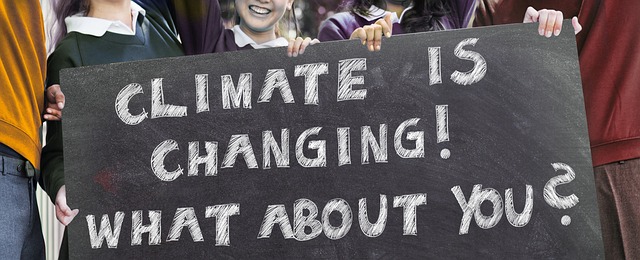
As the impacts of global warming become increasingly severe, combating climate change has become a global imperative.
Wind energy offers a practical solution for reducing greenhouse gas emissions and addressing the negative impacts of climate change.
The International Energy Agency (IEA), along with organizations like the Global Wind Energy Council (GWEC), work collaboratively to support the deployment of wind power and encourage investments in renewable energy markets worldwide.
Such global efforts play a vital role in the transition toward a more sustainable and carbon-neutral future.
Benefits for Developing and Developed Countries
Wind energy projects benefit both developing and developed countries.
In developing nations, wind power can provide electricity to remote areas that lack access to reliable energy systems. Promoting universal access to clean energy.
Moreover, wind power contributes to sustainable economic growth by creating job opportunities and attracting foreign investment.
In developed countries, wind energy helps diversify the energy mix. Plus, reducing dependence on fossil fuels, and meet the increasing electricity demand while minimizing greenhouse gas emissions.
Environmental Protection and Public Health
By reducing reliance on fossil fuels, wind energy significantly contributes to environmental protection.
The substitution of traditional energy sources with wind power reduces air pollution and the release of harmful greenhouse gases. Improving air quality and public health.
The shift towards clean energy also lessens the negative impacts associated with extracting and transporting raw materials for fossil fuels.
As wind energy continues to grow, it offers a pathway to cleaner and healthier environments for communities around the world.
Energy Efficiency and Renewable Integration
Wind energy plays a crucial role in enhancing overall energy efficiency and integrating renewable sources into existing energy systems.
By strategically locating wind farms in areas with consistent wind resources, electricity generation can be optimized.
Furthermore, wind power can complement other renewable energy technologies. Such as solar PV and hydroelectric power, by compensating for their intermittent nature.
The synergy between various renewable sources helps create a reliable and resilient energy infrastructure.
Local Authorities and Sustainable Development
Local authorities have a significant role in fostering sustainable development through wind energy projects.
They play a crucial part in the planning, permitting, and implementation phases. Ensuring that wind farms are built in harmony with local regulations and community interests.
Collaboration between local authorities and developers fosters transparency, environmental protection, and the realization of sustainable economic benefits for the region.
In the next section, we will explore the economic benefits of wind energy. Also, its impact on energy sectors and policies, and its contribution to a sustainable future.
Stay tuned as we continue our journey through the remarkable world of wind power.
Economic Benefits: Driving Sustainable Growth
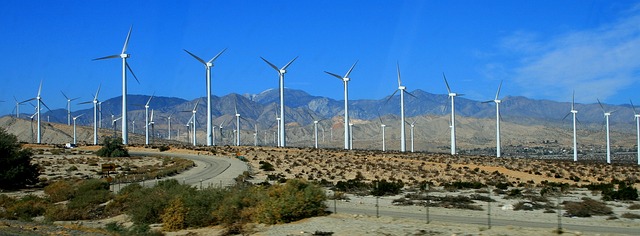
Wind energy projects have the potential to deliver substantial economic benefits.
The construction and operation of wind farms create jobs across various sectors. including manufacturing, installation, maintenance, and administration.
These projects require skilled workers, engineers, and technicians, stimulating local employment opportunities and supporting the growth of a skilled workforce.
Additionally, wind energy investments attract private sector involvement. leading to further economic growth and technological advancements.
Impact on Energy Sectors and Policies
The rise of wind energy has influenced energy sectors and policies worldwide.
Governments have recognized the importance of integrating wind power into their national electricity plans to diversify their energy mix and reduce dependence on fossil fuels.
Many countries have implemented feed-in tariffs, tax incentives, and renewable portfolio standards to promote wind energy development.
Furthermore, the integration of wind power necessitates upgrading energy infrastructure, grid connectivity, and storage solutions. To accommodate the fluctuating nature of renewable energy sources.
Driving a Sustainable Future
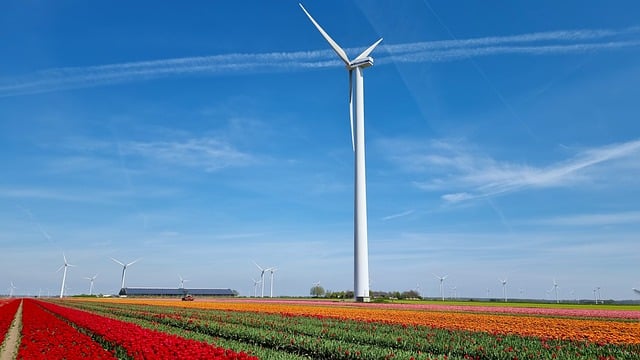
Wind energy’s contribution to a sustainable future cannot be overstated.
As a clean and renewable energy source, it plays a vital role in mitigating climate change. Reducing greenhouse gas emissions, and achieving carbon neutrality.
The utilization of wind power helps countries fulfill their commitments under international agreements. Like the Kyoto Protocol and supports global climate change mitigation efforts.
By transitioning to sustainable energy sources, we pave the way for a more secure, resilient, and environmentally conscious world.
Innovation and Technological Advancements
The development of wind energy has spurred innovation and technological advancements in the renewable energy sector.
Modern wind turbines are more efficient, durable, and capable of harnessing wind resources in various environmental conditions.
Advances in turbine design, such as larger rotor diameters and taller towers, have significantly increased the electricity generation potential of wind farms.
Ongoing research focuses on improving turbine efficiency, noise reduction, and the recycling of turbine components. Further enhancing the sustainability of wind power.
Collaboration and International Cooperation
The global nature of climate change necessitates collaboration and international cooperation in the development of renewable energy sources.
Organizations like the World Bank provide financial and technical support to countries striving to expand their renewable energy capacities, including wind power.
Knowledge-sharing platforms, conferences, and partnerships foster the exchange of best practices, facilitating the adoption of sustainable energy solutions across borders.
Through joint efforts, we can collectively address the challenges of climate change and promote a sustainable energy transition.
Wind Energy’s Role in Urban Areas
Wind power has the potential to play a significant role in meeting the energy needs of urban areas.
The installation of wind turbines in cities, along with rooftop and vertical-axis wind turbines, can contribute to local electricity generation and reduce reliance on centralized power grids.
In urban environments, wind energy can be integrated into buildings and infrastructure. Harnessing the power of wind currents that arise from the urban landscape.
This decentralized approach to energy generation enhances energy security and resilience in urban areas.
Environmental Considerations and Wildlife Protection
While wind energy offers numerous environmental benefits, it is essential to address potential concerns regarding wildlife protection.
Proper planning, site selection, and environmental impact assessments are crucial to minimize any negative impacts on bird populations and other wildlife.
Ongoing research and technological advancements aim to develop strategies that mitigate potential risks to wildlife.
Such as the implementation of radar systems and the use of deterrent devices on wind turbines.
Conclusion
Wind energy’s role in sustainable development is pivotal in our transition to a greener and more sustainable future.
Its clean and renewable nature, economic benefits, and contribution to mitigating climate change make it a crucial component of the global energy landscape.
As wind power continues to evolve and expand, it is poised to drive sustainable economic growth, protect our environment. And ensure a brighter and more sustainable world for generations to come.
Stay tuned for the next section, where we will explore the challenges and future prospects of wind energy, its impact on local communities, and the potential for a sustainable energy revolution.
Join us as we delve deeper into the fascinating world of wind power.
Challenges and Innovations in Wind Energy
While wind energy presents numerous advantages, it also faces certain challenges.
One significant hurdle is intermittency, as wind speeds can vary, affecting electricity generation. However, advancements in energy storage technologies.
Such as battery systems, offer promising solutions to store excess energy during periods of high wind production and release it when needed.
Additionally, ongoing research focuses on improving the efficiency and reliability of wind turbines, enhancing their performance even in low-wind conditions.
Wind Energy and Local Communities
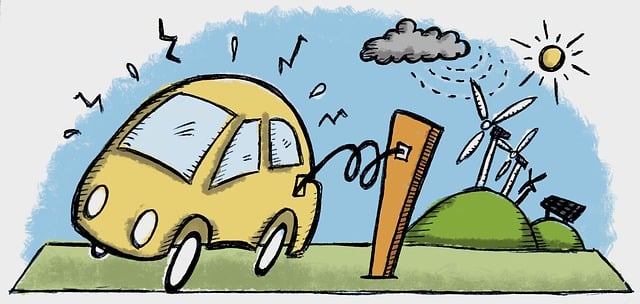
The development of wind energy projects has a profound impact on local communities.
Wind farms often involve collaboration with local authorities and community engagement to ensure that projects align with local needs and aspirations.
Moreover, wind energy projects can provide economic benefits through land lease agreements, job creation, and revenue sharing.
By involving local communities in decision-making processes and addressing potential concerns, wind power projects can foster a sense of ownership, empowerment, and shared benefits.
A Sustainable Energy Revolution
Wind energy, along with other renewable sources, is at the forefront of a sustainable energy revolution.
The shift towards clean and sustainable energy systems is driven by the urgent need to reduce greenhouse gas emissions, combat climate change, and secure a sustainable future.
Wind power, combined with solar energy and other renewable technologies, has the potential to reshape the global energy landscape.
Paving the way for a sustainable energy revolution that prioritizes environmental protection, economic growth, and social well-being.
The Path to Energy Independence
Wind energy contributes to energy independence by reducing reliance on imported fossil fuels.
Countries that heavily rely on energy imports face vulnerability to geopolitical risks and price fluctuations in the global energy market.
By harnessing domestic wind resources, nations can enhance their energy security, reduce trade imbalances.
And stimulate local economies through the development of a self-sustaining and resilient energy sector.
The Future of Wind Energy
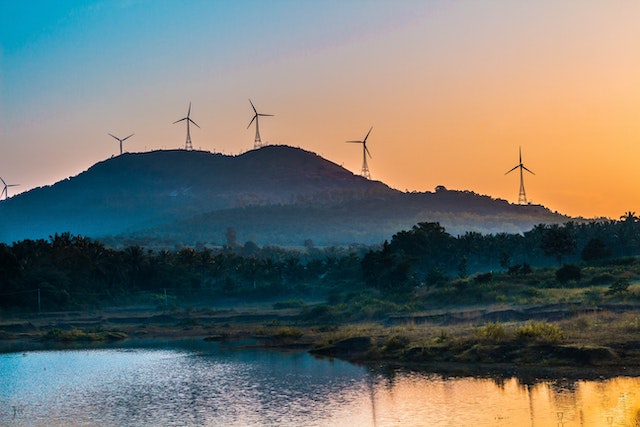
The future of wind energy holds immense promise. The continued advancement of wind turbine technology, including larger and more efficient turbines, will lead to increased energy generation capacity.
Offshore wind farms, with their vast potential and stronger wind resources, are expected to play a significant role in the future energy landscape.
Furthermore, the integration of wind power with emerging technologies like artificial intelligence, machine learning, and smart grid systems will optimize efficiency, grid management, and energy distribution.
Unlocking a Sustainable Future
Wind energy’s journey toward sustainable development is intertwined with the collective efforts of governments, private companies, communities, and individuals worldwide.
Through supportive policies, investment in research and development, and public awareness, the potential of wind power can be fully unlocked.
As renewable energy markets expand, prices become more competitive, and technological innovations continue. Wind energy will play an increasingly vital role in meeting the world’s energy needs sustainably.
In the upcoming sections, we will delve into the global impact of wind energy, its contributions to reducing carbon footprint. And its significance in achieving universal access to clean and affordable energy.
Stay tuned as we explore the transformative power of wind energy in creating a sustainable and equitable future.
Wind Energy’s Global Impact
Wind energy’s global impact extends far beyond individual countries. Its growth and adoption have resulted in a significant reduction in greenhouse gas emissions. Plus, a substantial decrease in carbon footprint worldwide.
By displacing fossil fuel-based electricity generation, wind power contributes to the global effort to combat climate change and mitigate its adverse effects.
Moreover, the deployment of wind energy projects fosters international collaboration. Sharing best practices, and driving innovation in renewable energy technologies.
Wind Energy and Carbon Footprint Reduction

One of the key benefits of wind energy is its ability to reduce carbon dioxide emissions, a major contributor to global warming.
As wind power replaces electricity generated from fossil fuels, such as coal and natural gas, the release of greenhouse gases into the atmosphere decreases.
Numerous empirical studies have shown that wind energy projects have played a significant role in achieving substantial carbon footprint reduction.
Paving the way for a more sustainable and environmentally conscious future.
Universal Access to Clean and Affordable Energy
Access to clean and affordable energy is a fundamental human right and a crucial factor in achieving sustainable development goals.
Wind energy, with its scalable and versatile nature, has the potential to provide universal access to electricity, particularly in remote and underserved regions.
Off-grid wind systems and microgrids powered by wind turbines offer reliable and clean energy solutions.
Improving the quality of life and economic opportunities for communities that previously lacked access to electricity.
Energy Solutions for Developing Countries
Developing countries often face energy challenges, including limited access to electricity, unreliable power grids, and dependence on expensive fossil fuel imports.
Wind energy offers a viable solution for these countries, enabling them to leapfrog traditional energy infrastructure and transition directly to clean and sustainable energy systems.
By capitalizing on their abundant wind resources, developing nations can meet their energy needs, drive economic growth, and enhance energy security while minimizing their environmental impact.
Wind Energy’s Role in Sustainable Economic Growth
Wind energy plays a significant role in fostering sustainable economic growth.
As wind farms are established, they create jobs, attract private investment, and stimulate local economies.
The manufacturing, installation, and maintenance of wind turbines require skilled workers, contributing to job creation and skill development.
Additionally, wind energy projects often bring economic benefits to rural areas through land lease agreements, supporting local communities and diversifying their income sources.
Energy Policy and Government Support
The successful integration of wind energy into national energy systems relies on supportive policies and government initiatives.
Governments play a crucial role in providing a conducive regulatory environment, offering financial incentives, and establishing long-term energy plans that prioritize renewable energy sources.
By setting ambitious renewable energy targets and enacting favorable policies, governments can drive the growth of wind energy and facilitate the transition to a sustainable energy future.
Public Health and Environmental Protection
Beyond its positive environmental impacts, wind energy also contributes to public health by reducing air pollution and associated health risks.
The replacement of fossil fuel-based power generation with clean wind energy helps improve air quality, reducing the prevalence of respiratory illnesses and related health complications.
Moreover, wind power projects adhere to strict environmental regulations and employ measures to minimize their impact on ecosystems, preserving biodiversity and natural habitats.
The Importance of Research and Development
Continued research and development are essential to enhance the efficiency, reliability, and cost-effectiveness of wind energy.
Investment in research initiatives, innovation hubs, and collaborative partnerships drive technological advancements in wind turbine design, materials, and manufacturing processes.
These advancements enable the development of larger, more efficient turbines, better integration with energy storage systems, and the exploration of emerging technologies.
Ensuring the sustained growth and competitiveness of wind power in the global energy landscape.
As we continue our exploration, we will delve into the role of wind energy in the context of energy demand. Its integration with other renewable sources, and its impact on sustainable development goals.
Meeting Growing Energy Demand
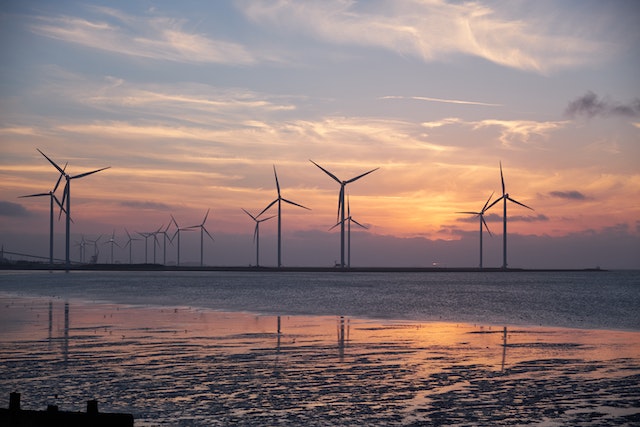
The demand for electricity continues to rise globally due to population growth, urbanization, and increasing industrialization.
Wind energy plays a crucial role in meeting this growing energy demand sustainably.
The scalability of wind power allows for the construction of large-scale wind farms that can generate significant amounts of electricity to power homes, businesses, and industries.
By expanding wind energy capacity, countries can meet their increasing energy needs while reducing their reliance on fossil fuels and minimizing environmental impacts.
Synergy with Other Renewable Sources
Wind energy works synergistically with other renewable sources, such as solar power and hydroelectricity.
Combining these complementary sources enables a more reliable and balanced energy generation system.
During periods of low wind, solar power can compensate for the decrease in wind energy production, ensuring a continuous supply of clean electricity.
Additionally, hydropower facilities can provide storage capabilities, allowing excess wind energy to be stored as potential energy in reservoirs and released when demand is high.
Wind Energy and Sustainable Development Goals
Wind energy aligns with several United Nations Sustainable Development Goals (SDGs), including affordable and clean energy (SDG 7), climate action (SDG 13), and decent work and economic growth (SDG 8).
By expanding wind power capacity, countries contribute to the achievement of these goals by providing access to clean and affordable energy, mitigating climate change impacts, creating jobs, and fostering sustainable economic growth.
Wind energy serves as a catalyst for sustainable development, addressing multiple aspects of the SDGs simultaneously.
Rural Electrification and Community Empowerment
Wind energy projects have a transformative impact on rural areas, particularly in developing countries.
By providing electricity to remote communities, wind power facilitates rural electrification, improving living conditions, healthcare services, education, and economic opportunities.
Access to electricity enables the use of modern appliances, supports small businesses, and enhances agricultural practices.
Furthermore, the involvement of local communities in wind energy projects empowers them to actively participate in decision-making processes, fostering a sense of ownership and sustainable development.
Innovations in Wind Turbine Technology
Technological advancements continue to drive innovations in wind turbine technology.
Modern wind turbines are more efficient, quieter, and capable of capturing wind energy at lower wind speeds.
The development of direct-drive turbines, advanced blade designs, and smart control systems enhances energy conversion efficiency and reduces maintenance requirements.
Moreover, research focuses on exploring offshore wind potential, floating wind farms, and innovative designs to maximize wind energy generation and expand deployment possibilities.
Global Cooperation for Renewable Energy
The pursuit of renewable energy solutions requires global cooperation and collaboration. International organizations.
Such as the United Nations Framework Convention on Climate Change (UNFCCC) and the International Renewable Energy Agency (IREA), facilitate dialogue, knowledge sharing, and technology transfer among countries.
Through initiatives like the Paris Agreement, countries commit to reducing greenhouse gas emissions and increasing renewable energy deployment.
The exchange of best practices, financial support, and joint research efforts strengthen the global renewable energy sector and accelerate the transition to a sustainable energy future.
The Role of Wind Energy in Energy Transition

Wind energy is a key player in the global energy transition. As countries aim to reduce their reliance on fossil fuels and transition to a sustainable energy mix, wind power offers a reliable and environmentally friendly alternative.
The integration of wind energy into existing energy systems requires careful planning, grid modernization, and investment in infrastructure.
However, with the right policies, technological advancements, and public support, wind energy can play a pivotal role in achieving a sustainable, low-carbon future.
In the upcoming sections, we will delve into the social and economic impacts of wind energy, its potential for energy storage. And the importance of continued investment in renewable energy research and development.
Stay tuned as we uncover more about the transformative
Social and Economic Impacts of Wind Energy
The social and economic impacts of wind energy extend beyond environmental benefits.
Wind power projects contribute to local economies by creating jobs, attracting investments, and stimulating economic growth.
The construction phase of wind farms provides employment opportunities for local communities, while the operation and maintenance phase sustains long-term jobs in the renewable energy sector.
Moreover, wind energy projects often include community benefit programs, revenue-sharing agreements, and investments in local infrastructure.
Supporting social development and enhancing the well-being of communities.
Wind Energy and Energy Storage
Energy storage plays a crucial role in maximizing the potential of wind energy. As wind power generation is intermittent, energy storage technologies help address the mismatch between supply and demand.
Excess electricity generated during high-wind periods can be stored and discharged when demand exceeds supply.
Energy storage systems, such as batteries, pumped hydro storage, or compressed air energy storage, enable a more reliable and flexible integration of wind energy into the grid.
Enhancing the stability and resilience of the power system.
Continued Investment in Renewable Energy R&D
Continued investment in renewable energy research and development (R&D) is vital to drive innovation, improve efficiency, and reduce costs in the wind energy sector.
Funding and support for R&D initiatives enable the development of cutting-edge technologies, novel materials, and advanced manufacturing processes.
Research efforts focus on increasing turbine efficiency, exploring new wind resources, improving offshore wind technology, and enhancing grid integration.
Continued investment in R&D paves the way for further advancements, making wind energy even more competitive and accessible on a global scale.
Enhancing Energy Infrastructure and Grid Integration
To fully realize the potential of wind energy, investments in energy infrastructure and grid integration are essential.
Upgrades to transmission and distribution systems facilitate the efficient transmission of electricity generated by wind farms.
Smart grid technologies enable real-time monitoring, grid optimization, and effective management of intermittent renewable energy sources.
Additionally, grid interconnections and international cooperation allow for the exchange of wind power across regions, maximizing resource utilization and enhancing energy security.
Wind Energy in Developing and Emerging Economies
Wind energy holds tremendous potential in developing and emerging economies.
These regions often have abundant wind resources and a growing energy demand.
By embracing wind power, these countries can leapfrog traditional fossil fuel-based energy systems and establish sustainable, low-carbon infrastructure.
The adoption of wind energy presents an opportunity for economic development, job creation, and improved energy access.
Empowering these economies to build a sustainable future while mitigating the adverse effects of climate change.
Public Awareness and Education
Public awareness and education play a crucial role in the successful integration of wind energy.
Informing communities about the benefits, safety measures, and environmental considerations associated with wind power helps foster acceptance and support.
Educational initiatives at schools, universities, and community centers raise awareness about renewable energy, inspire future generations, and promote a culture of sustainability.
Engaging the public in dialogue and addressing concerns through transparent communication builds trust and facilitates the adoption of wind energy solutions.
Wind Energy and Energy Justice
Wind energy has the potential to address energy justice concerns by providing clean, affordable, and reliable energy to marginalized communities.
By focusing on community-led projects, inclusive decision-making processes, and equitable distribution of benefits, wind power can contribute to closing the energy access gap.
Ensuring that communities have access to affordable energy and actively participate in the energy transition fosters social equity, reduces energy poverty, and promotes a just and sustainable society.
Government Support for Wind Energy
Government support is crucial in driving the widespread adoption of wind energy.
Policymakers can provide financial incentives, such as tax credits and feed-in tariffs, to attract investments in wind power projects.
Clear and consistent regulatory frameworks promote investor confidence and facilitate the development of wind energy infrastructure.
Governments can also collaborate with industry stakeholders to establish long-term renewable energy targets, implement supportive policies, and create favorable market conditions for wind energy.
By providing a stable and supportive environment, governments can accelerate the transition to a sustainable energy future and maximize the potential of wind power.
The Path to a Sustainable Energy Future
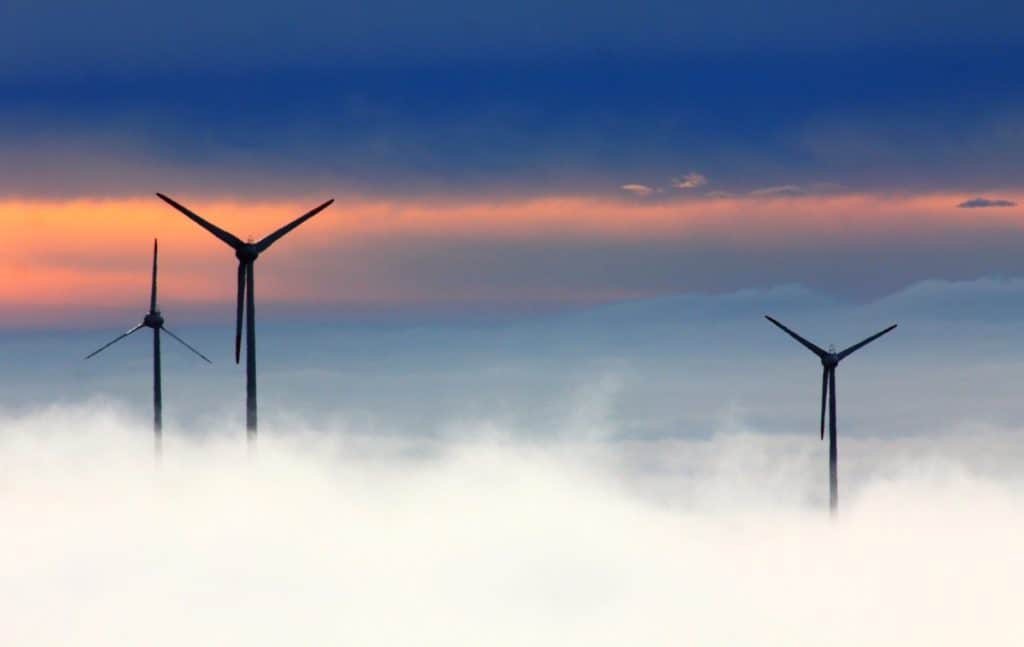
Wind energy is a cornerstone of the transition to a sustainable energy future. Its abundance, scalability, and environmental benefits make it a crucial component of the global energy landscape.
By harnessing the power of wind, we can reduce greenhouse gas emissions, mitigate climate change, enhance energy security, and foster economic growth.
However, achieving a sustainable energy future requires collective action, international cooperation, and sustained commitment from governments, industries, and individuals.
Embracing Renewable Energy: A Collective Responsibility
The adoption of wind energy and other renewable sources is a collective responsibility that extends to individuals, businesses, communities, and governments.
Transitioning to a sustainable energy future requires a paradigm shift in our energy consumption patterns.
Embracing energy efficiency measures, and supporting the deployment of renewable energy technologies.
By making conscious choices, advocating for renewable energy policies, and reducing our carbon footprint, we contribute to the global effort of creating a more sustainable and resilient world for future generations.
Wind Energy in Sustainable Development Conclusion
Wind energy’s role in sustainable development is multifaceted and crucial.
From its environmental benefits and economic growth opportunities to its contribution to universal access to clean energy.
Wind power has the potential to transform our energy systems and pave the way for a sustainable future.
As we navigate the complexities of climate change and energy challenges, harnessing the power of wind can lead us toward a greener, more resilient, and equitable world.
By investing in wind energy, promoting renewable energy policies, and prioritizing sustainability, we can shape a future where clean and abundant energy is accessible to all.
In the upcoming sections, we will delve into the role of wind energy in reducing greenhouse gas emissions, its potential to revolutionize transportation.
And the importance of international collaboration in advancing renewable energy solutions.
Stay tuned as we uncover more about the far-reaching impacts of wind power and its transformative potential in achieving a sustainable and prosperous planet.
Wind Energy and Greenhouse Gas Emissions Reduction
One of the primary drivers behind the adoption of wind energy is its significant contribution to reducing greenhouse gas (GHG) emissions.
By displacing fossil fuel-based electricity generation, wind power helps mitigate the release of carbon dioxide and other harmful pollutants into the atmosphere.
According to the International Energy Agency (IEA), wind energy accounted for over 1.1 gigatonnes of avoided carbon dioxide emissions in 2020 alone.
The widespread deployment of wind farms plays a crucial role in achieving global climate targets and transitioning to a low-carbon economy.
Wind Power Revolutionizing Transportation
The transformative potential of wind energy extends beyond electricity generation.
With the development of innovative technologies, wind power is revolutionizing transportation, particularly in the form of wind-assisted propulsion.
Large vessels, such as cargo ships and even passenger ferries, can incorporate sail-like structures or rotor sails that capture wind energy to assist in propulsion.
This integration of wind power in transportation reduces fuel consumption, lowers emissions, and contributes to the decarbonization of the shipping industry.
International Collaboration in Advancing Renewable Energy
Addressing the challenges of climate change and accelerating the adoption of renewable energy sources require international collaboration.
Organizations such as the United Nations, World Bank, and International Renewable Energy Agency (IRENA) facilitate knowledge sharing, promote renewable energy investments, and foster cooperation among nations.
International agreements like the Paris Agreement provide a framework for countries to work together in combating climate change and transitioning to sustainable energy systems.
By sharing best practices, technologies, and resources, countries can accelerate the global energy transition and achieve shared sustainable development goals.
The Role of Wind Energy in Energy-Efficient Buildings
Wind energy’s impact extends beyond electricity generation to energy-efficient buildings.
Wind turbines can be integrated into the architectural design of buildings, particularly high-rise structures, to harness wind power for onsite energy generation.
These building-integrated wind turbines (BIWTs) help meet a portion of the building’s energy demand, reducing reliance on the grid and lowering carbon emissions.
BIWTs can be particularly effective in urban areas with high wind speeds, contributing to sustainable building practices and promoting renewable energy integration at the local level.
Wind Energy in Remote and Off-Grid Areas
Wind power has a transformative impact on remote and off-grid areas that lack access to centralized electricity grids.
Standalone wind systems, coupled with energy storage solutions, provide a reliable and sustainable source of power.
Enabling communities in remote regions to access electricity for lighting, communication, education, and healthcare.
These off-grid wind energy solutions improve the quality of life, enhance economic opportunities, and contribute to the overall development and empowerment of underserved communities.
Wind Energy and Climate Resilience
In the face of climate change, wind energy plays a crucial role in building climate resilience.
The deployment of wind farms enhances the resilience of the energy sector by diversifying the energy mix and reducing dependence on vulnerable fossil fuel infrastructure.
Additionally, wind power is not reliant on scarce water resources, making it a resilient energy source in regions prone to water scarcity and drought.
By embracing wind energy, countries can strengthen their resilience to climate-related challenges and ensure a stable and sustainable energy supply.
The Importance of Public-Private Partnerships
Public-private partnerships (PPPs) play a significant role in driving the development and deployment of wind energy projects.
Collaboration between governments, private companies, and other stakeholders fosters innovation, knowledge sharing, and efficient project implementation.
PPPs enable the pooling of resources, expertise, and financial investments to overcome barriers and accelerate the growth of wind energy.
By leveraging the strengths of both the public and private sectors, countries can effectively harness wind power’s potential and drive the sustainable energy transition.
Wind Energy: A Pathway to a Sustainable and Prosperous Future
Wind energy represents a pathway to a sustainable and prosperous future.
Its ability to generate clean, renewable electricity, reduce greenhouse gas emissions, and enhance energy security positions it as a key component of the global energy transition.
By embracing wind power, countries can foster economic growth, create jobs, and improve the well-being of communities while mitigating the impacts of climate change.
The Importance of Long-Term Planning
Long-term planning is crucial for maximizing the potential of wind energy.
Governments and energy authorities need to develop comprehensive energy plans that outline clear targets, policies, and incentives for wind power deployment.
Long-term planning provides stability and certainty for investors, encourages innovation, and enables the development of a robust wind energy industry.
By setting ambitious renewable energy targets and fostering a favorable policy environment, countries can ensure a smooth and sustainable transition to a clean energy future.
Wind Energy and Social Acceptance
Ensuring social acceptance is essential for the successful integration of wind energy projects.
Effective community engagement, transparency, and participatory decision-making processes are vital in addressing concerns. Building trust, and fostering positive relationships with local communities.
Public education campaigns, sharing the benefits of wind energy, and involving communities in project planning and development contribute to social acceptance.
By actively involving stakeholders and respecting their perspectives, wind energy projects can gain social support and contribute to the overall well-being of communities.
Innovations in Wind Energy Financing
Innovative financing mechanisms are driving the growth of wind energy projects globally.
Green bonds, investment funds, and public-private partnerships provide avenues for financing large-scale wind farms and infrastructure development.
Financial institutions are increasingly recognizing the potential of wind energy as a profitable and sustainable investment.
These financing innovations promote the deployment of wind power, accelerate the energy transition, and contribute to the achievement of climate and sustainability goals.
The Role of Wind Energy in Developing Resilient Energy Systems
Wind energy contributes to the development of resilient energy systems that can withstand the impacts of climate change and other disruptive events.
Distributed wind generation, combined with energy storage and smart grid technologies, enhances system flexibility, reliability, and stability.
By diversifying the energy mix and decentralizing power generation, countries can build energy systems that are less susceptible to disruptions.
Improve energy security, and ensure a reliable supply of clean electricity.
Wind Energy as a Driver of Technological Innovation
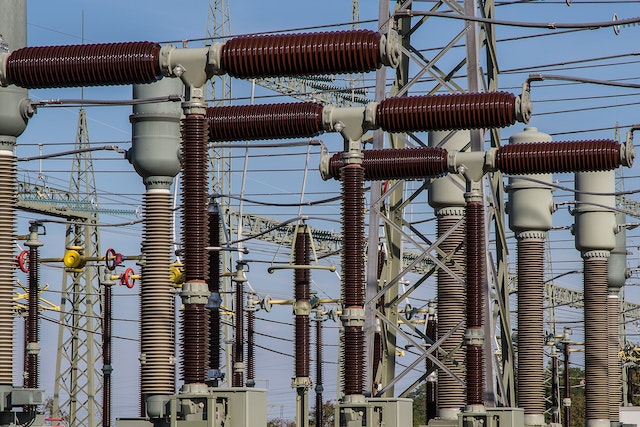
Wind energy in sustainable development
The pursuit of wind energy has driven technological innovation and advancements in various fields.
From turbine design and materials to grid integration and energy storage, the development of wind power has spurred innovation across the renewable energy sector.
This continuous push for technological advancements has led to more efficient turbines, improved energy conversion rates, and cost reductions.
The lessons learned from wind energy innovation have also influenced the development of other renewable energy technologies. Accelerating the overall progress toward a sustainable energy future.
The Promise of Wind Energy: A Call to Action
The promise of wind energy lies in its ability to provide a sustainable, reliable, and affordable source of electricity.
To fully harness its potential, it requires a concerted effort from governments, businesses, communities, and individuals.
Governments must enact supportive policies, create favorable market conditions, and establish clear renewable energy targets.
Businesses can invest in wind energy projects, drive technological advancements, and adopt sustainable practices.
Communities and individuals can embrace renewable energy, support local projects, and advocate for a clean energy future.
Together, we can create a world where wind power plays a central role in meeting our energy needs while preserving the planet for future generations.
In the upcoming sections, we will explore the future outlook of wind energy, the role of wind power in the transportation sector. Plus, the imperative for a global commitment to renewable energy.
Stay tuned as we unravel the exciting possibilities and opportunities that lie ahead in the realm of wind energy.
The Future Outlook of Wind Energy
The future of wind energy is promising, with significant growth projected in the coming years.
As technology continues to advance and costs decrease, wind power is becoming increasingly competitive with conventional energy sources.
The United States, in particular, has witnessed a substantial expansion of wind energy capacity, with a focus on both onshore and offshore wind farms.
According to the U.S. Department of Energy, wind energy is expected to provide a significant portion of the country’s electricity demand.
Contributing to a more sustainable and diversified energy portfolio.
Fact: The United States is one of the leading countries in wind energy consumption. With over 120,000 megawatts (MW) of installed capacity as of 2021. Generating enough electricity to power over 38 million homes. (Source: American Wind Energy Association)
Wind Power in the Transportation Sector
The benefits of wind power extend beyond electricity generation and have the potential to revolutionize the transportation sector.
Wind-assisted propulsion systems are being explored for various modes of transportation, including ships, trains, and even automobiles.
For example, wind-assisted propulsion systems in shipping, such as rotor sails or kite sails, harness wind energy to supplement traditional engines. Reducing fuel consumption and emissions.
This integration of wind power in the transportation sector offers a greener and more sustainable approach to mobility.
A Global Commitment to Renewable Energy

The importance of a global commitment to renewable energy, including wind power, cannot be overstated.
With the urgent need to combat climate change and reduce dependence on fossil fuels, governments and international organizations are increasingly focusing on policies and initiatives to promote renewable energy adoption.
Through international agreements like the Paris Agreement, countries have committed to transitioning to low-carbon and sustainable energy systems.
Global investment in renewable energy, including wind power, is essential to drive innovation, improve infrastructure, and accelerate the worldwide energy transition.
Wind Energy and the National Electricity Plan
In many countries, wind energy plays an important role in the national electricity plan.
Governments recognize the environmental and economic benefits of wind power and integrate it into their energy strategies to diversify their energy sources, reduce greenhouse gas emissions, and enhance energy security.
By incorporating wind energy into the national electricity plan, countries can meet their energy demands while promoting sustainability and achieving their climate and energy goals.
Wind Energy’s Contribution to Global Change
As the world faces the challenges of global change, including climate change and resource depletion, wind energy emerges as a critical solution.
By harnessing the power of wind, countries can reduce their reliance on finite resources, mitigate greenhouse gas emissions, and mitigate the adverse impacts of global change.
Wind power’s ability to provide clean, renewable energy aligns with the goals of sustainable development and offers a pathway toward a more resilient and sustainable future.
Fact: Wind energy accounted for 29% of the total energy consumption in Denmark in 2020, making it the country with the highest wind energy consumption in the world. (Source: Danish Energy Agency)
Recent Posts
Understanding Energy and Electricity: The Power For Progress
Energy and Electricity Energy and electricity are integral components of modern life, powering everything from homes and businesses to transportation and communication. Without them, the...
The Future of Wind Energy The future of wind energy is set to play a critical role in addressing global energy needs while combating climate change. As renewable energy sources like wind and...


